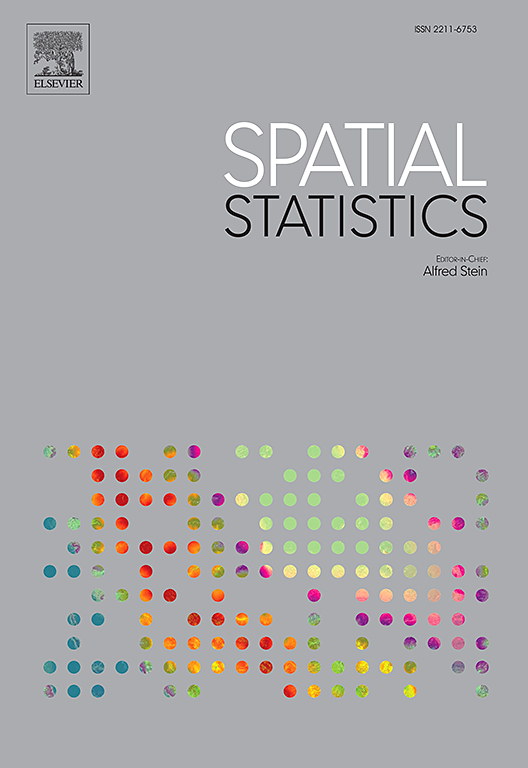Geographically informed graph neural networks
IF 2.5
2区 数学
Q3 GEOSCIENCES, MULTIDISCIPLINARY
引用次数: 0
Abstract
Graph neural networks (GNNs) have been introduced to spatial statistical tasks due to their mechanisms of simulating spatial interactions and processes among geographical neighbours using graph structures. However, previous methods ignore quantifying differences in attributes among adjacent spatial characteristics. Considering this spatial characteristic by fitting the spatial statistic trinity (SST) framework may help improve models’ accuracy and robustness. Thus, we introduce the geographically informed graph neural network (GIGNN) by considering the additional geospatial feature: closer geographical entities may interact less when spatial disparities are captured. When setting up the model, GIGNN leverages differences of attributes by spatial stratified heterogeneity, quantifies connections between geographical entities, and inherits k-order neighbour attribute aggregation and message-passing mechanisms from GNNs. GIGNN is applied to an urbanization analysis study in the Greater Perth Area, Australia, showing higher accuracy than the existing machine learning models and other GNNs in simulation and prediction accuracy. GIGNN achieved an accuracy of 84.1% for simulation and an accuracy of 81% for prediction. Incorporating spatial characteristics into GNNs enhances simulation and prediction accuracy in geoscientific applications, highlighting the importance of spatially aware models in solving complex problems by capturing geographical data dependencies.
地理信息图神经网络
图神经网络(gnn)由于其利用图结构模拟地理邻居之间的空间相互作用和过程的机制而被引入到空间统计任务中。然而,以往的方法忽略了相邻空间特征之间属性差异的量化。通过拟合空间统计三位一体(SST)框架来考虑这一空间特征有助于提高模型的准确性和鲁棒性。因此,我们通过考虑额外的地理空间特征来引入地理信息图神经网络(GIGNN):当空间差异被捕获时,距离较近的地理实体可能交互较少。在建立模型时,GIGNN通过空间分层异质性利用属性差异,量化地理实体之间的联系,并继承了gnn的k阶邻居属性聚合和消息传递机制。将GIGNN应用于澳大利亚大珀斯地区的城市化分析研究,在模拟和预测精度上均优于现有的机器学习模型和其他gnn。GIGNN的模拟精度为84.1%,预测精度为81%。将空间特征纳入gnn可以提高地球科学应用中的模拟和预测精度,突出了空间感知模型在通过捕获地理数据依赖性来解决复杂问题方面的重要性。
本文章由计算机程序翻译,如有差异,请以英文原文为准。
求助全文
约1分钟内获得全文
求助全文
来源期刊

Spatial Statistics
GEOSCIENCES, MULTIDISCIPLINARY-MATHEMATICS, INTERDISCIPLINARY APPLICATIONS
CiteScore
4.00
自引率
21.70%
发文量
89
审稿时长
55 days
期刊介绍:
Spatial Statistics publishes articles on the theory and application of spatial and spatio-temporal statistics. It favours manuscripts that present theory generated by new applications, or in which new theory is applied to an important practical case. A purely theoretical study will only rarely be accepted. Pure case studies without methodological development are not acceptable for publication.
Spatial statistics concerns the quantitative analysis of spatial and spatio-temporal data, including their statistical dependencies, accuracy and uncertainties. Methodology for spatial statistics is typically found in probability theory, stochastic modelling and mathematical statistics as well as in information science. Spatial statistics is used in mapping, assessing spatial data quality, sampling design optimisation, modelling of dependence structures, and drawing of valid inference from a limited set of spatio-temporal data.
 求助内容:
求助内容: 应助结果提醒方式:
应助结果提醒方式:


